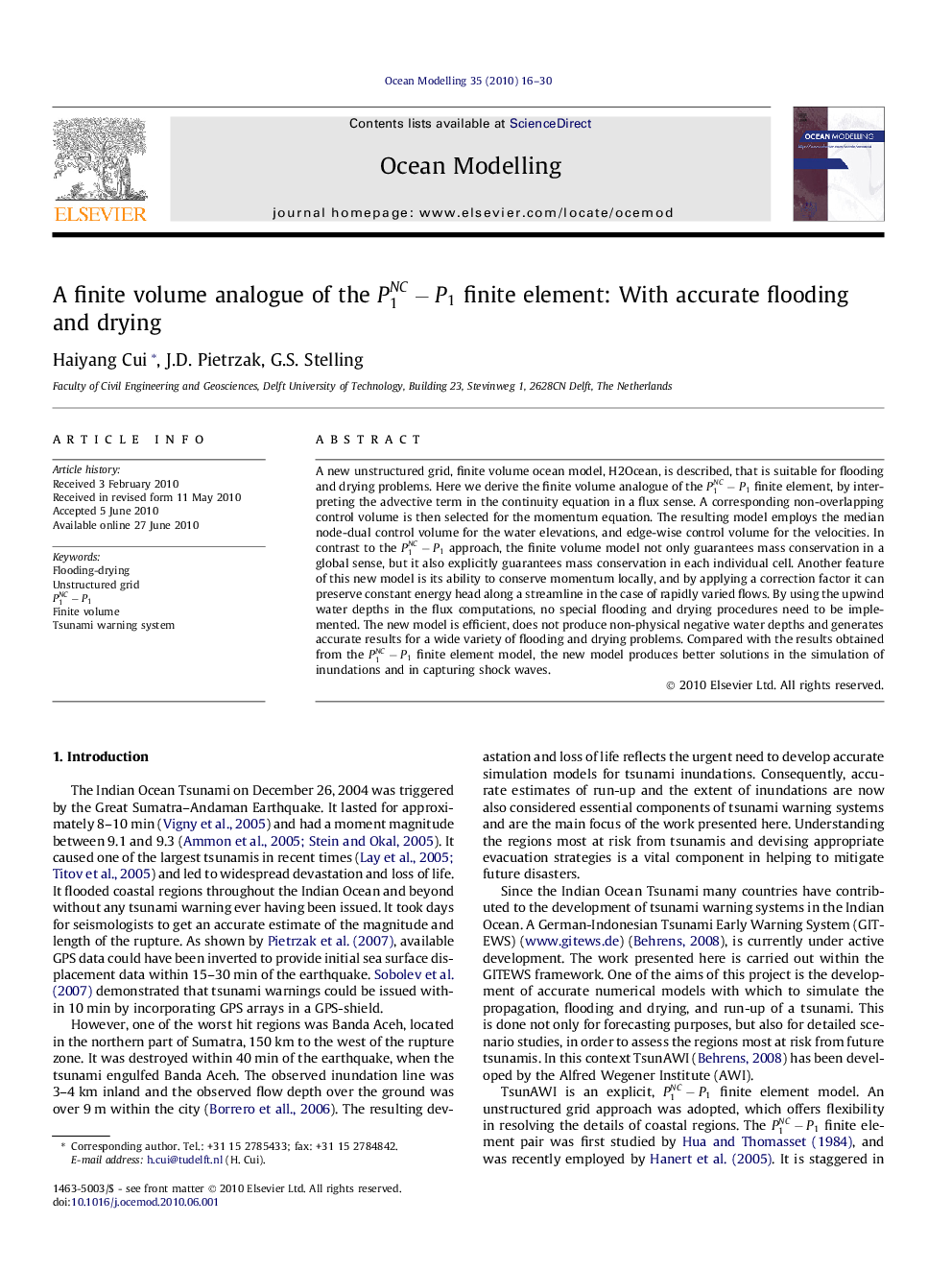| Article ID | Journal | Published Year | Pages | File Type |
|---|---|---|---|---|
| 4552446 | Ocean Modelling | 2010 | 15 Pages |
Abstract
A new unstructured grid, finite volume ocean model, H2Ocean, is described, that is suitable for flooding and drying problems. Here we derive the finite volume analogue of the P1NC-P1 finite element, by interpreting the advective term in the continuity equation in a flux sense. A corresponding non-overlapping control volume is then selected for the momentum equation. The resulting model employs the median node-dual control volume for the water elevations, and edge-wise control volume for the velocities. In contrast to the P1NC-P1 approach, the finite volume model not only guarantees mass conservation in a global sense, but it also explicitly guarantees mass conservation in each individual cell. Another feature of this new model is its ability to conserve momentum locally, and by applying a correction factor it can preserve constant energy head along a streamline in the case of rapidly varied flows. By using the upwind water depths in the flux computations, no special flooding and drying procedures need to be implemented. The new model is efficient, does not produce non-physical negative water depths and generates accurate results for a wide variety of flooding and drying problems. Compared with the results obtained from the P1NC-P1 finite element model, the new model produces better solutions in the simulation of inundations and in capturing shock waves.
Keywords
Related Topics
Physical Sciences and Engineering
Earth and Planetary Sciences
Atmospheric Science
Authors
Haiyang Cui, J.D. Pietrzak, G.S. Stelling,
